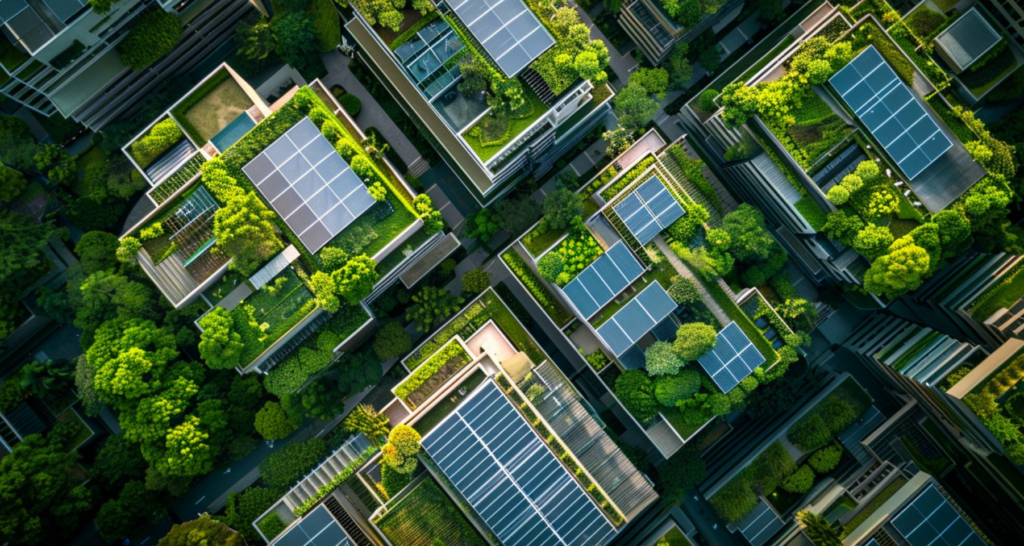For Poolesville Green, by K.L. Kyde
April weather brings out the “inner gardener” in many of us. By now, dedicated earth tillers already have potatoes and peas planted in their vegetable beds, and have cut back last year’s perennial stalks, which the overwintering insects and birds no longer need for shelter. Even those of us who don’t have piles of garden catalogs stacked up are thinking of putting a few planters out on the deck, or checking out the azalea selection at local nurseries.
Can your imagination stretch to planting a garden on your roof? Not a collection of plants in pots, but a roof completely covered with vegetation? Widely used in Europe and Japan, “green roofs,” also called “living roofs,” are increasingly showing up on buildings in the U.S. Green roofs are fully vegetated spaces on top of human-made structures. Generally, they are built of several layers: roof decking; insulation; a waterproof membrane; a lightweight (non-soil) growing medium; and drought-tolerant plants. Additional layers like root barriers and drainage mats are sometimes included.
Living roofs are divided into two types, intensive and extensive. Intensive green roofs are generally built on large commercial buildings like corporate headquarters or hotels. The planting medium for intensive roofs is deeper (6-12”) than for extensive roofs, and the plants can include shrubs and even full-grown trees. Buildings with intensive roofs are specially engineered structures to support this additional weight. These roofs often have a recreational use, with pathways and benches for people, in addition to their economic and environmental benefits.
Extensive green roofs are a better fit for smaller buildings and private homes, although they often are installed on large commercial buildings. For example, Ford Motor Company’s Dearborn MI truck assembly plant has a 10-acre green roof. University of Maryland College Park has living roofs on multiple campus buildings. Extensive living roofs are typically planted with low-growing, drought-tolerant, sun-loving sedum (stonecrop) plants in 3-4” of growing medium. Although the most widely used plants are native to Europe or Asia, designers are using more and more shallow-rooted native perennials. Once these plants are established, they are perfectly happy living 10 or 12 feet above the ground, in a planting medium that collects sufficient water to support them. Sedums are succulents; they hold and use water very effectively. Planted closely, they spread out to cover roof area, keeping out weeds.
Living roofs provide significant benefits to the people who live under them, as well as to the public. They extend the life of roofing membranes that can be degraded by direct sunlight. They insulate the space underneath them, and reduce the amount of energy needed, especially for cooling. Research shows that summer heat flow through a green roof can be 80% less than through a conventional roof, with energy costs up to 16% less. One study in Canada found the demand for air conditioning in summer was reduced by 75% in structures with green roofs.
Green roofs insulate from noise too, especially of low frequency noise – think traffic here – in one study lowering the inside noise level by 40 decibels! For comparison, normal human speech is 55-65 decibels.
The thermal mass of a green roof helps stabilize building temperatures, so structures absorb less heat in the summer and lose less in the winter.
The benefits of a green roof go further than the roof it’s built on. The plantings capture and store carbon. They reduce carbon emissions directly but also indirectly through reductions in fossil fuel use for building energy systems. They reduce the “heat island” effect that occurs in densely populated areas, by absorbing rather than reflecting solar rays. They store water, acting like giant sponges, storing and slowly releasing rainwater. Only about half of the rain that falls on a living roof makes it to ground level, and when it does, it is cooler and cleaner. This helps our stormwater management systems and, even more importantly, the health of our streams and rivers.
Living roofs provide wildlife habitat and support biodiversity. Pollinators and birds use the
“habitat patches” that roofs can provide, particularly if there are multiple green roofs in one area, and even more if a variety of native plants are used in the roof composition. As urban development continues and wild habitats decrease or vanish, green roofs can help support bees and other insects we, and other critters, rely on.
And on top of all that, green roofs are beautiful. Sedums flower in many colors, and native plants like Maryland’s state plant, the black-eyed Susan, give a pop of bright golden yellow. Many sedums are evergreen, so even in winter they show up on a roof as a green carpet. We are lucky to have one of the country’s premier roof plant growers right here in Maryland, Ed Snodgrass of Emory Knoll Farms.
If you have a flat or low-slope roof that needs replacing, it’s a great time to consider replacing it not with new shingles, but with plants!

